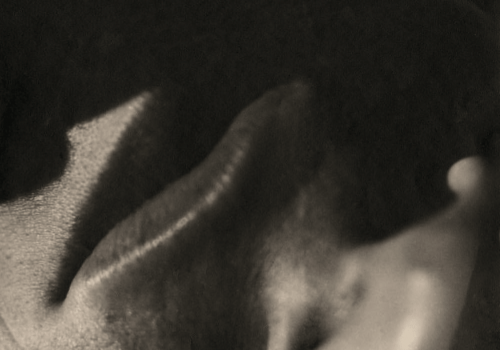The Zbigniew Dłubak – Héritier des avant-gardes exhibition is being held at the Fondation Henri Cartier-Bresson between January 17 and April 29, 2018. In the post-war period, Zbigniew Dłubak (1921-2005) was one of the driving forces behind the profound changes in the Polish artistic scene. A great experimenter of photographic forms, he was also a painter, art theoretician, teacher and editor of the Fotografia magazine for twenty years, introducing into this publication a robust photographic critique and interdisciplinary approach to the medium.
The first photographic images created by Dłubak, who taught himself to paint and draw in the early 1940s, were undoubtedly strictly utilitarian: they documented the activities of the clandestine army he joined and then, when he was deported to the Mauthausen concentration camp after his participation in the Warsaw uprising in 1944, they were dictated by the tasks the Nazis assigned to him in the camp’s photography studio (touch-ups and perhaps portraits or reproductions). The images he shows in Krakow were however preceded by a few more artistic attempts, created in 1947 and early 1948, which show the desire to understand from within two significant trends in the eyes of a polish novice that might constitute the photographic modernism .
On the one hand, Dłubak creates images of trees using a low-angle shot or fragments of ground using a sharp high-angle shot, stemming from a sort of pictorialism marked by a superficial link with the Germanic New Vision, in keeping with Jan Bułhak, then considered the father of Polish modern photography. On the other hand, he arranges compositions of insignificant little objects (like matches, springs, buttons, screws and so on) on tables, which he photographs like abstract not-to-scale landscapes, as practised by constructivists and notably Florence Henri (some of whose images he might have known, even though he never seems to have mentioned them). However, nothing in these two series really prepares for what can be seen in the photographs shown in 1948. […]
Dłubak’s key originality comes from the fact that he focuses less on producing the supernatural and more on finding it, by blurring the too-certain habits of ordinary vision but without the factual origin of his image obscuring its poetic efficacy. […]
So, for Dłubak, it’s not just about reconciling previously separate artistic traditions, but dismantling the traditional opposition between abstraction and figuration. The use of the extreme close-up (on the scale of macro photography) and technical manipulations (solarisation or pseudo-solarisation, presentation of the negative as a positive) must not be seen as a distancing from external reality but, on the contrary, as a way of penetrating its core; less like a hidden thing than a spiritual vision, and less like burying than a revelation of what is latent within, giving us a subtler understanding of it. As Dłubak writes in 1948 in an article on method called “Reflections on photography”: “Photographic realism is a different kind of realism and, fittingly, the faithfulness and attachment to the object, which has the nature of a raw material here, prohibits any artifice, because it is immediately unmasked. Such realism requires one to rely essentially on nature avoiding any narration.”
Éric de Chassey
Eric de Chassey is an art historian, critic and professor of contemporary French art. He has been General Director of the National Institute of Art History since 2016, after having been Director of the Académie de France in Rome from 2009 to 2015.
Zbigniew Dlubak : Heir of the Avant-Garde
January 17 – April 29, 2018
Henri Cartier Bresson Foundation
2 Impasse Lebouis
75014 Paris
France
















